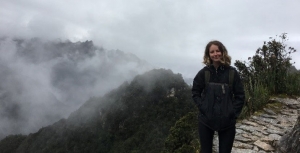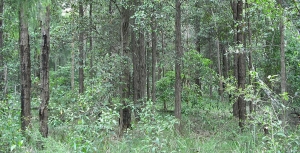Displaying items by tag: critically endangered ecological community
John Martyn Research Grant Award for 2019
We are very pleased to announce that the John Martyn Research Grant for 2019 has been awarded to Gabriella Hoban. Gabriella’s research project is entitled Soil Characteristics as Indicators of Restoration Trajectories in Urban Woodlands. This subject is highly relevant to STEPs aims to restore degraded ecological communities.
She has provided us with this description of her project.
Hi! I’m Gabby. I am an honours student at the University of New South Wales. I love ecology, ecological restoration and conservation and have a slight obsession with plants.
For my honours project I will be studying the effect of soil characteristics on restoration trajectories in urban woodlands. My research will be based in western Sydney within the Cumberland Plain Woodland, a critically endangered vegetation community. In this region, a concentration of threatened species and ecological communities overlap with intense development pressure.
Through my project I aim to quantify the relationship between the abundance of exotic and native plant species in relation to soil constituents in bushland reserves with agricultural land use legacies. Soil samples will be collected and the effect of soil properties on restoration trajectories will be determined.
My research will build on existing data from long-term study sites established in 1989. This research provides an exciting opportunity to examine long term trends in regenerating bushland.
I hope this research can inform conservation efforts not only at this site, but also similar grassy reserves recovering from legacies of former agricultural land use that span a large area across south-eastern Australia.
Thank you to STEP and its members for the opportunity.
Sydney Turpentine-Ironbark Forest Declared Critically Endangered
The NSW Threatened Species Scientific Committee, established under the Biodiversity Conservation Act 2016, has made a Final Determination to list Sydney Turpentine-Ironbark Forest (STIF) in the Sydney Basin Bioregion as a critically endangered ecological community. This classification already applies under the federal Environment Protection and Biodiversity Conservation Act.
The highest threat category is now applied because STIF has experienced large:
- reductions in geographic distribution
- degrees of environmental degradation
- disruptions of biotic processes and interactions
There is an estimated 2,940 ha of STIF remaining, or less than 10% of the estimated original distribution.
Remnants of STIF are poorly represented in the formal reserve network, and unreserved areas are subject to the threat of vegetation clearing. The total area under reservation is estimated to be 570 ha, equivalent to less than 2% of the estimated pre-1750 distribution or 20% of the remaining extent.
Remnants of STIF have historically been subjected to a range of anthropogenic disturbances including logging, grazing by domesticated livestock and burning at varying intensities.
Remnants are typically small and fragmented and are susceptible to continuing attrition through clearing for routine land management practices due to the majority of remnants being located in close proximity to rural land or urban interfaces.
Applications to the NSW Land and Environment Court demonstrate that there is ongoing pressure to clear STIF in the course of developing private properties or for the establishment of asset protection zones.
STIF is subject to ongoing invasion by an extensive range of naturalised plant species. Weed invasion is exacerbated by the proximity of remnants to areas of rural and urban development and the associated influx of both weed propagules from gardens and nutrients contained in stormwater runoff, dumped garden waste and animal droppings.


